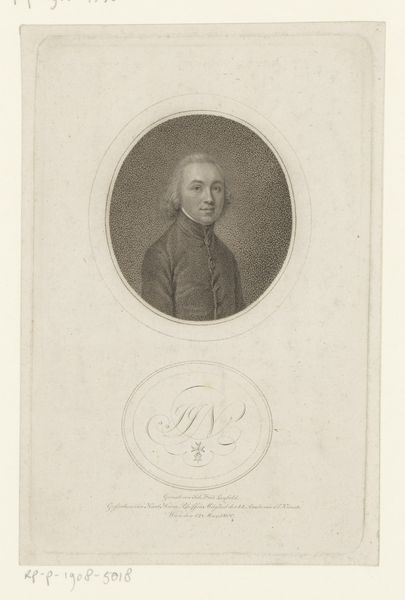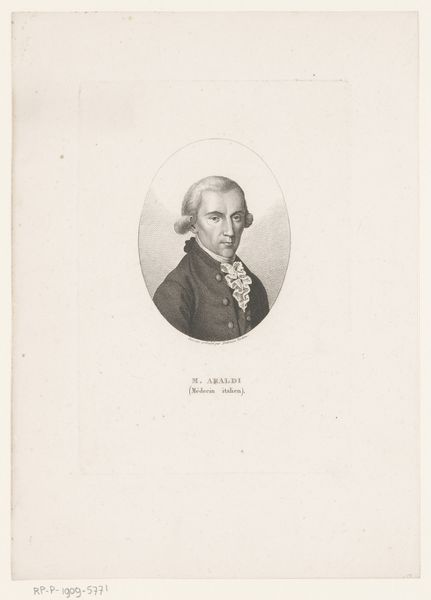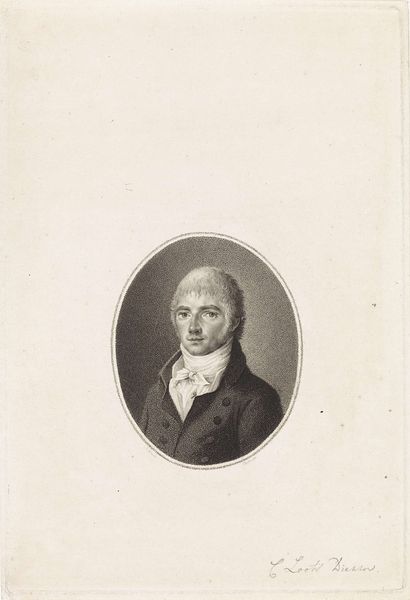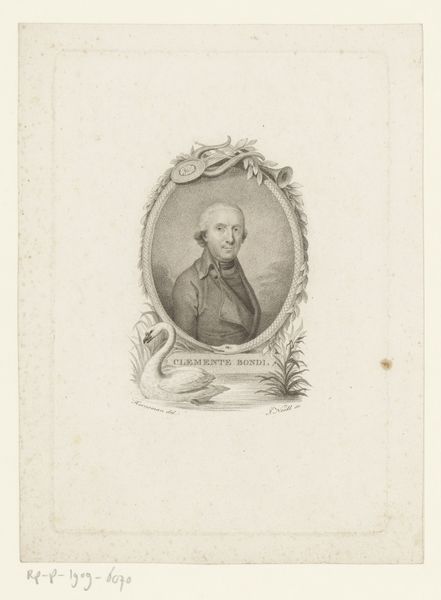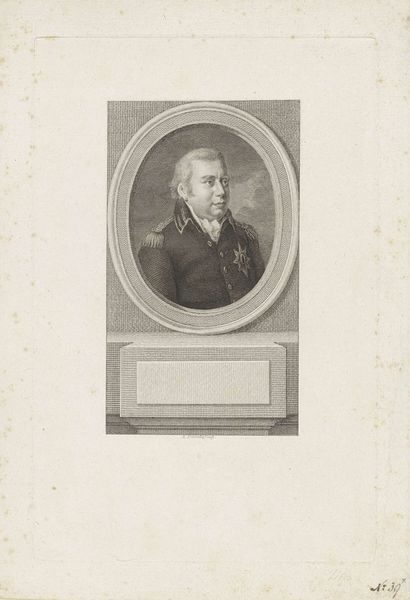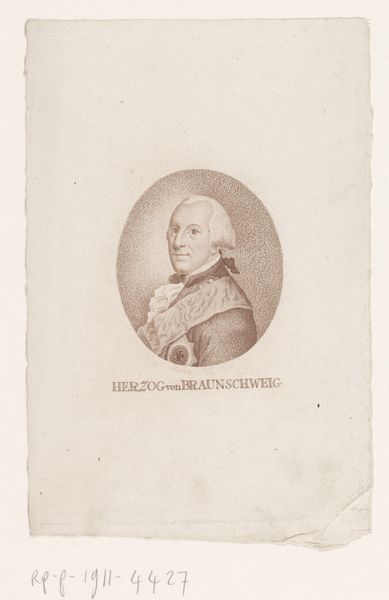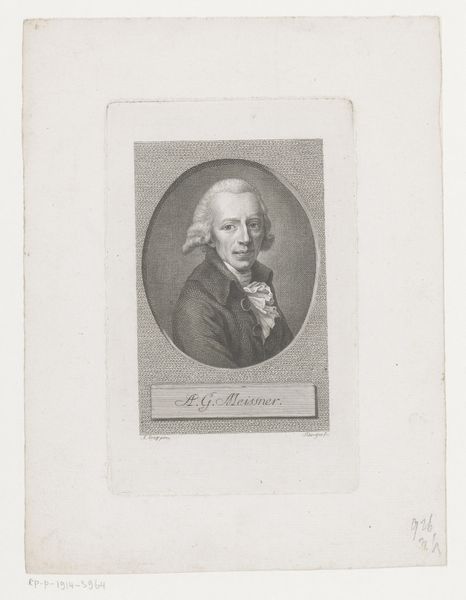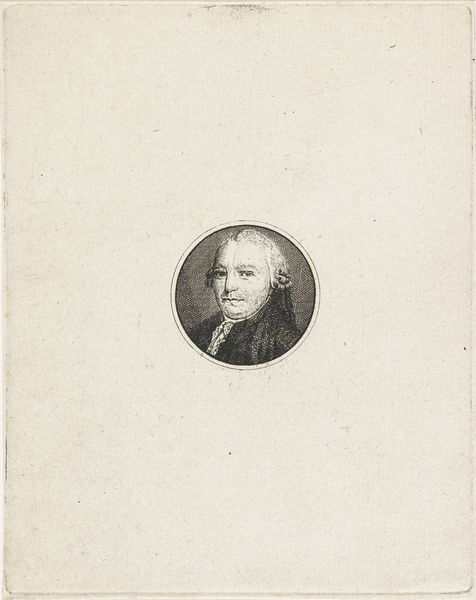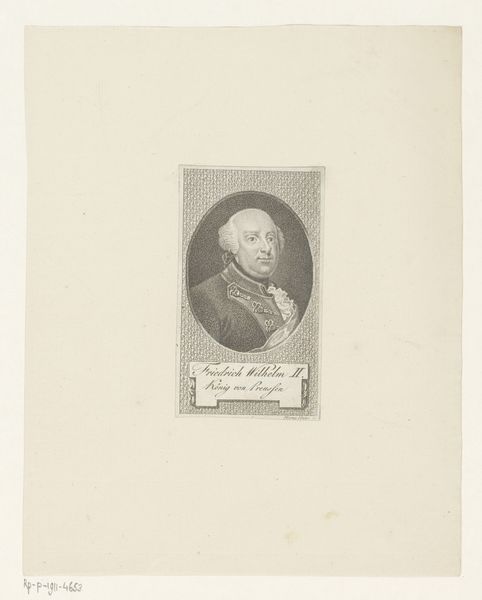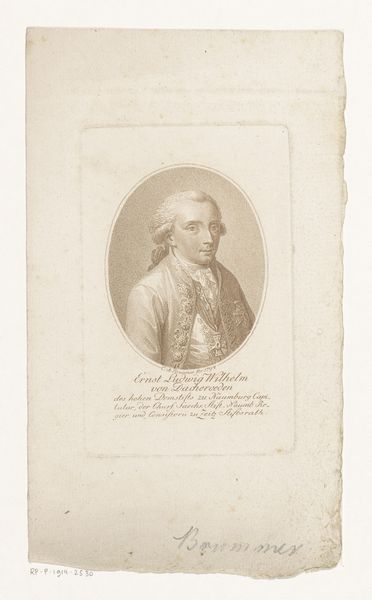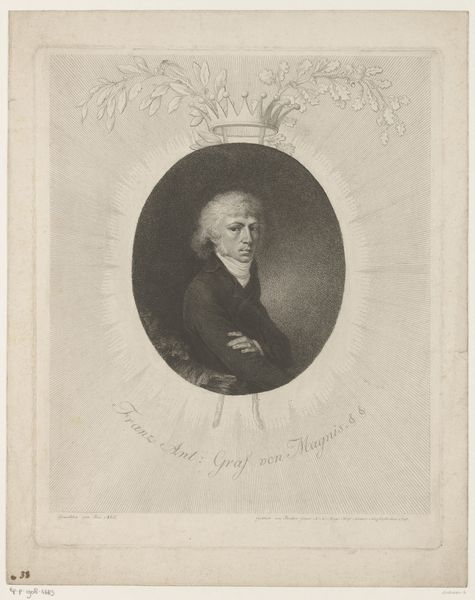
engraving
#
portrait
#
neoclacissism
#
pencil sketch
#
old engraving style
#
academic-art
#
engraving
Dimensions: height 150 mm, width 125 mm
Copyright: Rijks Museum: Open Domain
Curator: An intriguing example of portraiture executed using engraving, this piece from the Rijksmuseum depicts Johann Joseph Natter. Though undated, it's believed to originate sometime between 1790 and 1858, created by Pieter van der Meulen. Editor: My first impression is one of poised serenity. The circular framing, combined with the man's direct gaze, create a very intimate and centered visual experience. The light seems to mold his face... what a study in the texture of tiny strokes! Curator: Absolutely, it's interesting how Van der Meulen employs those stippling and line techniques characteristic of engravings, almost dissolving into pure tonal value at a distance, achieving very refined gradations and details that enhance the sitter's features. Look how his wig has a light ethereal appearance to it. Editor: And observe how this seemingly simple portrait fits perfectly into the Neoclassical movement! Beyond the man himself, the very graphic structure is a statement, it reflects an age steeped in ideals of clarity and order. Its placement at the Rijksmuseum invites us to consider the role of such imagery in shaping and preserving cultural memory. Who was Natter in the grand narrative? Curator: Indeed. Historical records show Johann Joseph Natter to be a prominent gem-cutter and medalist, celebrated for his intricate cameos. Therefore, this piece not only captures Natter's likeness but is also an assertion of his status and his professional persona carefully displayed through subtle visual markers. His dress code and general aura reflects success and belonging to higher social spheres. Editor: So the print functions not only as a record, but also as propaganda for upward mobility. This helps viewers identify themselves, a point of relation across socio-political and socio-economical classes to admire the individual. Curator: I appreciate how our engagement with the subject expands merely from observing form into decoding content and socio-historic relevancy. Editor: I concur, thinking structurally allowed to dive deep. We're led to not only appreciate its formal qualities, but its narrative and its role in the bigger social context.
Comments
No comments
Be the first to comment and join the conversation on the ultimate creative platform.
